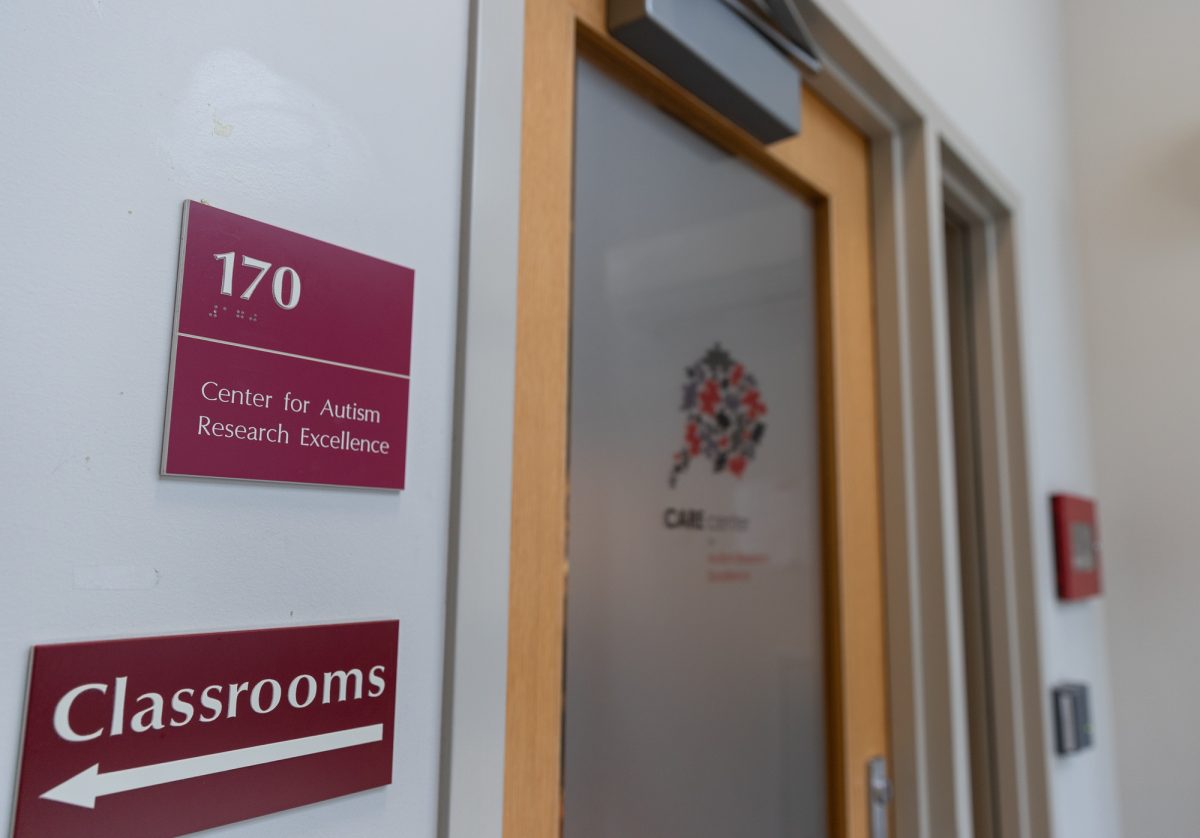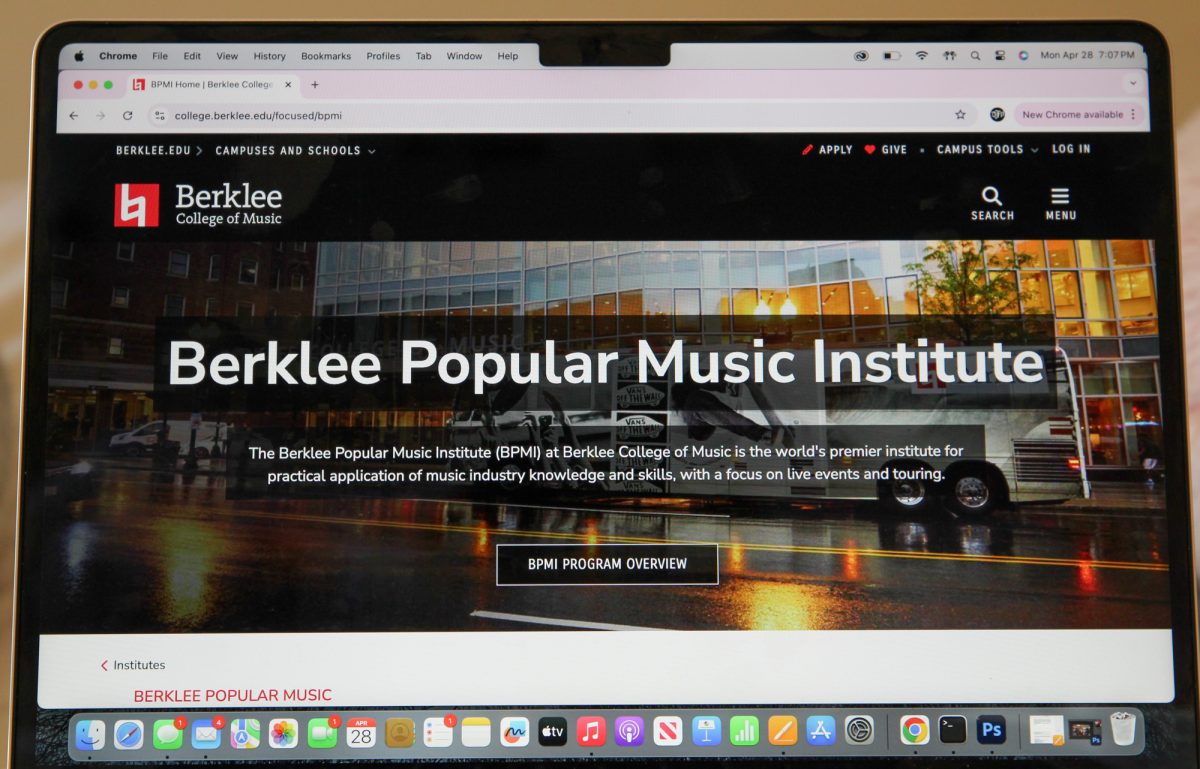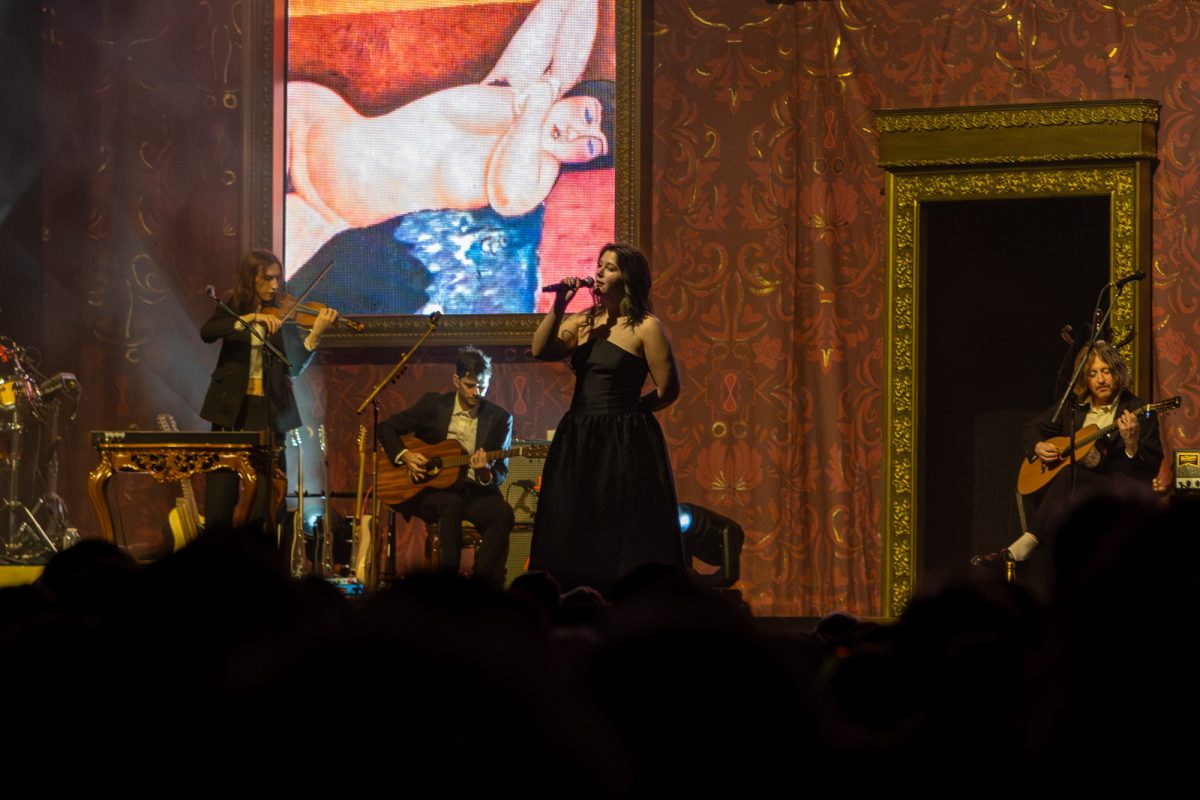Propped against the sleek white walls and the natural light, Bhen Alan’s bold and bright tapestries of the “Hidden and Hiding Tago ng Tago” exhibit stand out against the stillness of Boston University’s 808 Gallery.
According to the gallery description, Tago ng Tago — also known as “TNT immigrant” — is a term to describe Filipinos who are not citizens and hide their immigration status. The exhibition runs from Nov. 3 to Dec. 1, and the artwork attempts to reclaim the word “as a state of being and protection to Filipinos and Filipino-Americans across the globe,” according to the exhibition.
Rosa Jang, a curatorial assistant at 808 Gallery and a second-year graduate student in the College of Arts and Sciences, curated the exhibition of Alan’s work. Jang decided to focus on Alan’s tapestries to show how artists can “integrate contemporary problems” and “historical practices” in their work.
“He uses weaving as this tool to actively protect, meditate, camouflage and shape shift different parts of his background and history,” Jang said.
Alan wove materials like baskets and rosaries into his tapestries with bright blue, pink and yellow fabric juxtaposing these materials. Jang described Alan’s work as “colorful,” “textural” and symbolic of his culture. When Jang first saw his work earlier this year, what stuck out to her were the rosary beads.

“Whether or not you’re from the same background or the same identity, those fragments can resonate with you,” Jang said.
For Filipino Americans at BU, the artwork serves as a great source of representation, said Lilly Bolandrina, a junior in CAS and BU’s Filipino Student Association’s internal affairs representative.
“Filipino Americans are actually one of the largest Asian American groups within the country,” Bolandrina said. “But I think our representation, especially in comparison to other places, is pretty low.”
What stuck out in the exhibition to Barrett Walsh, a sophomore in the College of Communication, was the story that popped out through Alan’s work.
“The artist is obviously trying to convey a very complex relationship that he has with his past, and his culture and faith,” Walsh said.
Jang said the strategy for the exhibit was representation.
“We’re hoping that those parts of his marginalized identities connect to those who also share those identities or communities,” Jang said.
And for Bolandrina, who joined the BUFSA to continue immersing herself into Filipino culture, she believes this exhibition can help educate the BU community about all the “diverse and vast” culture of the Philippines.
“There’s over 7000 islands within the country, and every single island has its own take on things and its own identity and culture within it,” Bolandria said. “This exhibition can show great aspects of parts that aren’t just the most popular.”
It’s not every day that BU showcases an artist of Alan’s background, Jang said.
“I don’t think it’s very common within the academic university space to have a young and emerging artist of several marginalized identities so prominently featured literally within the physical landscape of schools,” she said.


























































































































